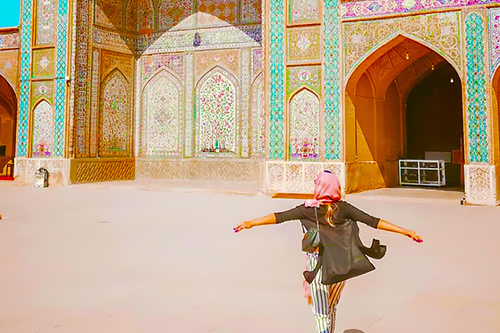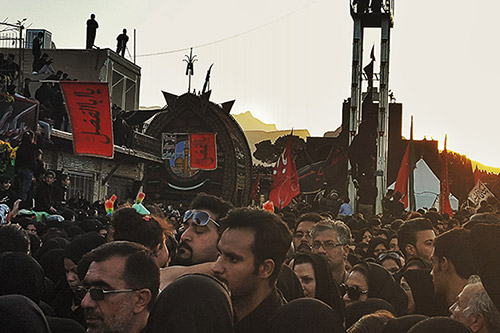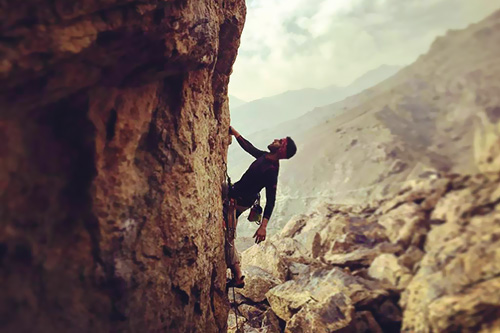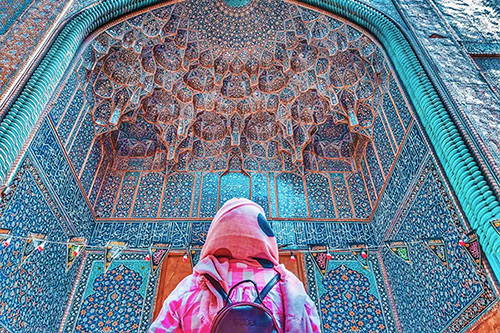 Signin with Google
Signin with Google Signin with Facebook
Signin with Facebook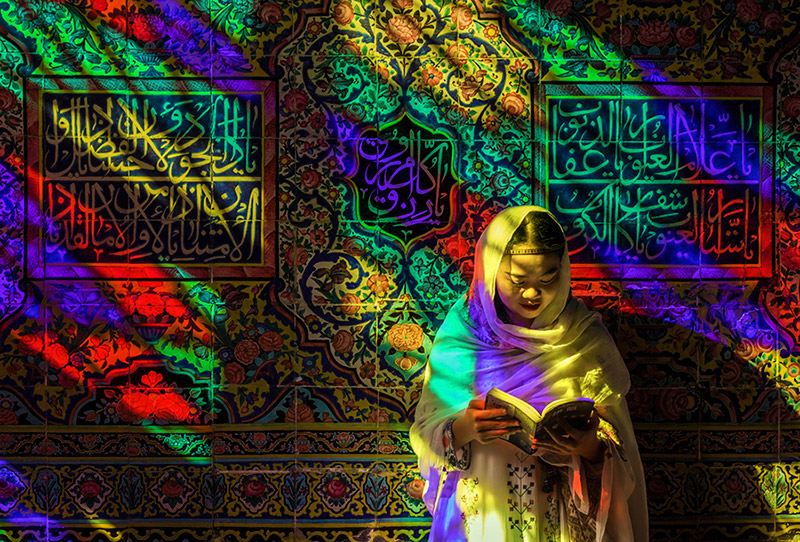 About Iran
About IranUNESCO’s World Heritage Sites in Iran

As a cradle of civilization, Iran greatly enriches the UNESCO World Heritage List with its exceptional cultural and natural sites. This list features places that are considered remarkable accomplishments of humanity.
Since 1979, 26 Iranian sites have been listed by UNESCO, from the historical splendour of Persepolis, Tchogha Zanbil, or Bam Citadel, to the natural wonders of the Lut Desert and Hyrcanian Forests. Scattered in every corner of the country, they are 26 more reasons to visit Iran.
Are you ready to discover Persia's legacy in the world's history? So make your choice and plan your itinerary, with us, to some of its most precious sites:
Iran’s 26 Historical and Natural Sites on UNESCO’s World Heritage List
1- TchoghaZanbil - Sacred Temple of the Elamites
Tchogha Zanbil is one of a few existing and the best-preserved "Ziggurats" in the world. These massive structures are representative of Mesopotamia. Near the ancient city of Susa, this Ziggurat was a religious temple built by the Elamites and Persia's very first building. Visitors walking around this five-storey pyramidal structure made out of adobe bricks can feel the weight of history. Tchogha Zanbil is also a fascinating masterpiece of architecture, each floor having its own independent foundations, and the oldest water treatment system. Visiting the ruins of this holy city is a journey through the origin of our civilization.
2- Pasargadae – Remnant of a Glorious Past
Pasargadae is not only the Achaemenids' first city and capital, but it's also an earthly image of paradise and an architectural example of the Persian Gardens. Discovering this ancient city is getting acquainted with the legacy of Cyrus the Great, who lies here in his tomb, the most important monument in Pasargadae. This benevolent king was a pioneer, famous for implementing the first Declaration of Human Rights in history. Its city reflects its tolerance toward the different cultures of Western Asia, by synthesizing its architecture in an outstanding manner.
3- Persepolis- Magnificent of the Persian Empire
Persepolis embodies the greatness of the Persian Empire and is a symbol of Iran all over the world. The second capital of the Achaemenid Empire is considered by UNESCO among the world’s greatest archaeological sites. Crossing the Gate of All Nations of Persepolis is breathtaking, and awakens the imagination. Gigantic sculpted phoenixes and winged bulls seem to be eternal guardians of this splendid palatial complex. Among the ruins, visitors can listen to the stories recalled by the beautiful friezes covering the walls. They share the secrets of this royal city, from ceremonies and parties to war, fear, terror and probably the king's last supper.
4- The Persian Garden- Earthly manifestation of Paradise
When designing Pasargadae in the 6th century BC, Cyrus the Great also desired to create an earthly version of Paradise. This is what gave birth to the magnificent architecture of the Persian Gardens, which can nowadays be appreciated at famous places such as Eram and Shazadeh Gardens. Divided into four geometrical parts and integrating water with genius engineering, they have deeply influenced the art of garden design in different regions of the world. Among numerous gardens in Iran, there is a list of 9 Iranian gardens inscribed as world heritage.
5- Shushtar Historical Hydraulic System- A masterpiece of creative genius
This interconnected set of waterfalls, dams, canals, and tunnels of the Shushtar hydraulic system has exceptional value and testifies to human creative genius. This site is considered to be the biggest industrial complex before the industrial revolution, and its history can be traced back to the 5th century B.C. This masterpiece was engineered to divert the water of the river to provide it to the city of Shushtar. It's still complete and functioning today. The large scale of the complex makes it exceptional and the blue waters running between the ochre rocks create a marvellous rendering.
6- Bam and its Cultural Landscape- A Mirage in The Oasis of the Desert
As the citadel of Bam appears in the desert, it feels like a mirage. But, the ancient Achaemenid city still stands proudly, as an example of some of the earliest engineering techniques in history. This fortified medieval town is also the largest adobe building in the world. Located in the middle of a splendid desert, the city was at the crossroads of important trade routes of the Silk Road and later became one of the main silk and cotton garment production centres. Bam drew its life from ancestral underground canals, the "qanats", which made it a true oasis in the heart of the desert.
7- Susa- Revived Civilization
Susa is one of the most historical cities in the world, the cradle of mankind. This ancient civilization centre and thousand years old capital of the Elamites, has witnessed many dynasties and populations settling on its soil. Thus, the site is a true museum displaying the legacy of prehistoric, historic and Islamic eras. It recalls the forgotten story of this important artistic, industrial, trading and political centre.
8- The Persian Qanat- Hallways of Underground Life Down Below
The ancient qanat system has allowed agriculture and life to be spread throughout the arid regions of the Iranian plateau, hence people assumed qanat as living, and considered gender for it. This masterpiece of engineering dates back to the first millennium BC. Based on complex calculations and architectural techniques, this system transports water along kilometres into underground tunnels, only with the power of gravity. It's still functional in today's Iran. Eleven well-preserved qanats located in Khorasan, Yazd, Kerman, Isfahan, and Markazi provinces have been registered by UNESCO, as an exceptional testimony of the desert's civilizations.
9- Bisotun- Footprints of Greatness
Bisotun is the special legacy of the Persian Empire, carved in the rock of Kermanshah's mountains. This archaeological site, located in one of the main trading routes of the Achaemenid Empire, displays an impressive bas-relief and cuneiform inscription ordered by Darius I. It portrays the power of the king and his battles, leaving the visitor in awe. An inscription is written in Elamite, Babylonian, and ancient Persian: this monumental text is one of the world’s oldest historical documents.
10- Takht-e-Suleyman- Where Mystery, Legend, and Reality merge
Takht-e-Suleyman (“Throne of Solomon”) is a vast historical site surrounding a mysterious lake, in the volcanic mountain region of West Azerbaijan. This site, which melts harmoniously with the stunning natural background, has a strong spiritual significance related to the importance of fire and water for Zoroastrians. Many historical monuments and sanctuaries can be observed, among which is the Sassanid fire temple dedicated to Anahita, the goddess of water. During the prehistoric era, this place also holds significant importance, as it was Iran’s biggest sanctuary, as well as an educational, religious, and social centre.
11- Armenian Monastic Ensembles of Iran- Holy Sanctuaries of the Mountains
In the northwest of Iran, close to the border with Armenia, three monastic ensembles testify of the invaluable cultural exchange between different cultures: Persian of course, but also Byzantine, Assyrian, Muslim, and Orthodox. The monasteries of St Thaddeus and St Stepanos, as well as the Chapel of Dzordzor, are precious holy sites presenting the best of Armenian architectural tradition. These well-preserved edifices, all set in incredible natural landscapes, call for contemplation and peace. They have survived over 2000 years and are still now places of pilgrimage, as a living witness of Armenian traditions in Iran.
12- Shahr-e-Sokhte (Burnt City)- The Ashes of Ancient Civilization
This belongs to what is perhaps the oldest developed city in the world, 5000 years of history lies in this site located in Sistan and Baluchestan province. Called Shahr-e Sokhte, the "Burnt City", the ruins recall the story of this merchant city and manufactural centre. Archaeologists made unique discoveries here, such as the first animation, and the world's earliest known artificial eyeball. The rise and sudden fall of this Bronze Age city remain tainted with mystery. Nowadays; ashes and fragments of pottery invite the visitor to rebuild it in imagination.
13- Tabriz Historic Bazaar- Silk Merchant of the Middle East
Iran is famous for its bazaars, with their narrow alleys and colourful tiny shops selling beautiful silk carpets and delicate enamelled vases. Come to Tabriz City to discover the gem of all bazaars: it's the largest covered market in the world and one of the oldest in the Middle East. Built on the famous Silk Road trading route, it brought prosperity to the region and has been a place of cultural exchange since antiquity. Many world travellers and globetrotters such as Marco Polo, Jean Chardin, and Ibn Battuta have praised the glory and significance of this bazaar.
14- Cultural Landscape of Meymand (Meymand Stone Village) - Ancient Human Beehive
The village of Meymand and its surroundings are truly unique. This area is a rare example of rocky architecture, with houses carved in the foot of mountains. Humans started to inhabit here 12.000 years ago. Unlike the villages of Cappadocia in Turkey, these troglodytic houses are still inhabited, left as they were centuries before.
Some 3000 years ago, semi-nomadic tribes of the region with triple migration in the year, started to settle down in those cave dwellings with the unique lifestyle which has been kept alive till now.
15- Gonbad-e Qabus- An Observatory, a Guide or a Display of Power?
Gonbad-e Qabus is the kind of monument that makes human feels slight. First, because of its height: the 53m high tomb standing on a hill can be seen from far away as it is the tallest brick monument in the city. Second, the cylindrical tower is an outstanding example of early Islamic design and innovative architecture. It's an incredible testimony of the development of science and mathematics in the Islamic era during the first millennium. At that time, the former capital of the Ziyarid Dynasty was also a major centre of cultural exchange in the region.
16- Soltaniyeh Dome- The Charming Turquoise Curvature
The Mausoleum of Oljaytu is in the city of Soltaniyeh, a masterpiece of Persian architecture, and a turning point in the development of Islamic architecture. The beautiful turquoise dome, surrounded by eight thin minarets, is the world's third-biggest dome and was built during the Ilkhanid dynasty, founded by the Mongols. The interior decoration is also exceptional, believed to have inspired the dome of Florence's cathedral and "anticipating the Taj Mahal".
17- Isfahan’s Naqsh-e-Jahan Square (Shah Square - Imam Square)- The Pattern of the World
Isfahan is one of the jewels of Iran and represents the glory of the Persian Empire. Its main square, Nasqsh-e Jahan, one of the world's biggest plazas, gathers some of the most beautiful historical buildings in the country: The mesmerizing Sheikh Lotfollah Mosque, the impressive blue-domed Shah Mosque, the sophisticated wooden Ali Qapu Palace, and the majestic Qeysaerie Gate of Bazaar. They are linked by a series of two-storeyed arcades, under which starts the historical bazaar. Built by the Safavid in the 17th century, this square displays all the power in Social life, religious, political and economic ways.
18- Jameh Mosque of Isfahan –The Mother of All Mosques
Located in the historic part of Isfahan, this ancient Mosque is a fabulous collection of 12 centuries of Islamic architecture. This religious edifice is the oldest preserved of this type in Iran and has been a prototype for later mosques in the country, but also all over the continent. This huge complex thus depicts different styles in ornaments and ingenious construction. It's a true gem that brings the visitor back to the glory of the Islamic Persian monarchy.
19- The Art and Mysticism of Sufis
One of the most sacred places of Sufism in the world is the mausoleum of the prominent leader of Islamic Sufism, Sheikh Safi al-din; This historical monument located in the city of Ardabil is also the holy shrine of many important figures, such as Shah Ismail, the founder of the Safavid Dynasty. It's an architectural and artistic masterpiece, with striking sets of golden muqarnas decorating its interiors. One after the other, the visitor can enter the seven sections and cross eight gates, to get familiar with the spirituality and principles of Sufism. This religious retreat has kept intact its mystical spirit and is still today, a centre of pilgrimage for Sufis.
20- Golestan Palace- Royal Rosary of the Sycamore Garden
There is no better example of the splendour of the Qajar era than this Palace, nestled in the heart of the Iranian capital. This ensemble of historical monuments gathers some of the oldest buildings of Tehran. Built by the Safavid kings, Golestan Palace was the centre of political power under the Qajar Dynasty. Nowadays, it displays the magnificence and delicacy of the Persian arts: from its walls decorated with colourful painted tiles to its ceilings covered with tiny shining mirrors. Without mentioning its beautiful garden, described in Pietro Della Valle’s travelogue. It's still today an inspiration for Iranian artists and an endless source of amazement for visitors.
21- The historic city of Yazd – Adobe city of the 1001 Night
Yazd holds a special place in the heart of most tourists, often their favourite destination in Iran. This historical city has indeed everything to amaze the visitors and transport them to the tale of the 1001 nights. Its traditional architecture is a demonstration of ingenuity, with its wind-catchers (the oldest non-mechanical cooling system) and its Qanat network, bringing water to this city located in the middle of the desert. Its centre is a maze of narrow ochre streets, with small abode houses and rooftops offering a breathtaking view. Yazd is also home to the most important Zoroastrian community, adding to the cultural diversity of this city.
22- Sassanid Archaeological Landscape of Fars Region- A Panorama of a Kingdom
The remnants of the Sassanid Empire are located in eight sites of the southeast Fars Province. It's the latest Iranian member of the UNESCO Cultural World Heritage Sites List. Those fortified structures, palaces, and hallways cover all the eras of the Sassanian Empire and hold major historical importance. The splendid bas-reliefs of Shapur I are forever recalling to the visitor the greatness of the Persian kings, in a blend of art and history. These sites are not only a testimony of influential architecture but they also melt harmoniously in their natural landscape.
23- Lut desert- Home to Colossus of Sand
In Persian, "Lut" means "bare", which makes a lot of sense as this desert is literally among the hottest and most arid spots on the Earth, where almost no living creature is able to survive. It's here, in the southeast of Iran, that has been recorded the highest temperature on the Earth: 70.7°C! As one of the biggest deserts in the world that offers no mercy to the lost wanderers. Well accompanied though, the visitor can appreciate the wonders created by nature: shaped by strong winds and the stream of the only salty river of the arena, massive sand mountains have emerged. Those colossal yardang formations present an exceptional geological process and an astonishing result in the eyes of the explorer because the desert never leaves the one who once had been caught by its enchantment, just as Alfons Gabriel once said.
24- The Hyrcanian Forests, the Green Belt of Northern Iran
The only humid forests zone of Iran which are home to the endangered Persian Leopard and 58 other mammal species includes three provinces of Gilan, Mazandaran and Golestan in Iran, also a small part of Azerbaijan country. These temperate deciduous forests are among the world's living fossils which survived from the ice age the great flavour of the Caspian Sea prevented the ice coldness passing over the waters to reach the forests on the south shores and Now we can call the Caspian Hyrcanian forests "the mother of European forests".
25- Cultural Landscape of Hawraman/Uramanat
Uraman Takht, Hawraman or Oraman is a vast mountainous region located between Iran and Iraq in the west of Iran, within Kermanshah and Kurdistan provinces. It is located between Marivan City and Sirvan River, overlooking the Takht Mountains. Along with cultural and architectural beauties, Uramanat is an attractive natural spot. Terraced architectural fascinations, numerous cultural anchors, and flawless natural attractions made UNESCO inscribe the "Cultural Landscape of Hawraman/Uramanat" as a World Heritage.
26- Trans-Iranian Railway
Sneaking through spiral tunnels, passing over deep valleys, among dessert plains and forests This Railway connecting the north of Iran, to the south is a remarkable engineering achievement. The grand scale, rare construction techniques, and amazing historical and natural attractions on their way made it the first railway announced as a UNESCO Cultural World Heritage.
These 26 sites offer a glimpse of the historical and natural wonders Iran has to offer. You also might want to take a look at the short list of intangible cultural heritage
